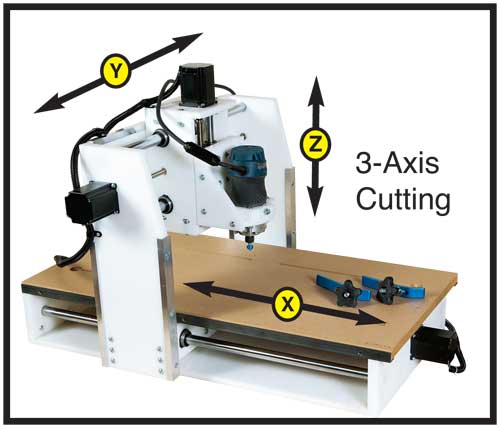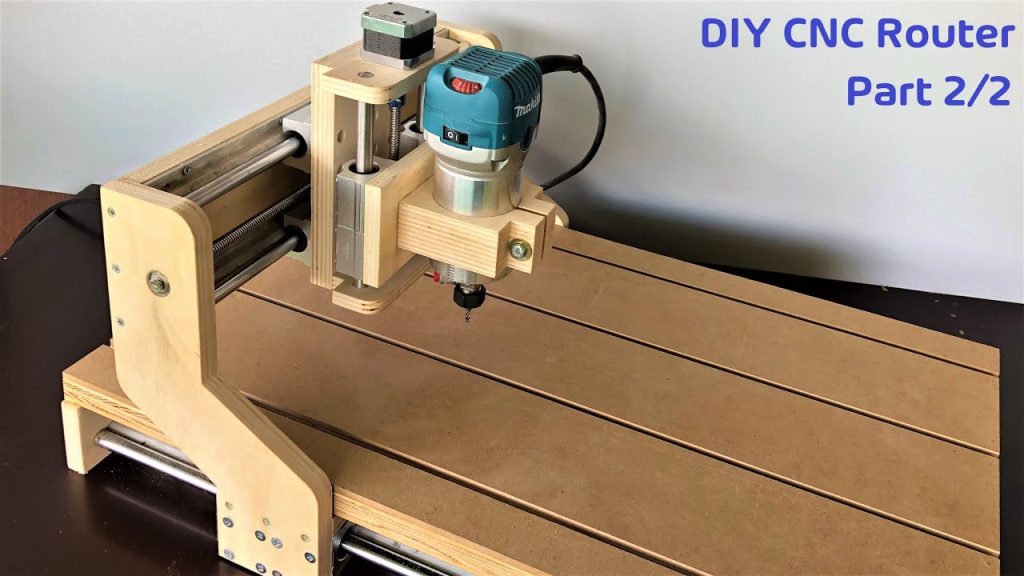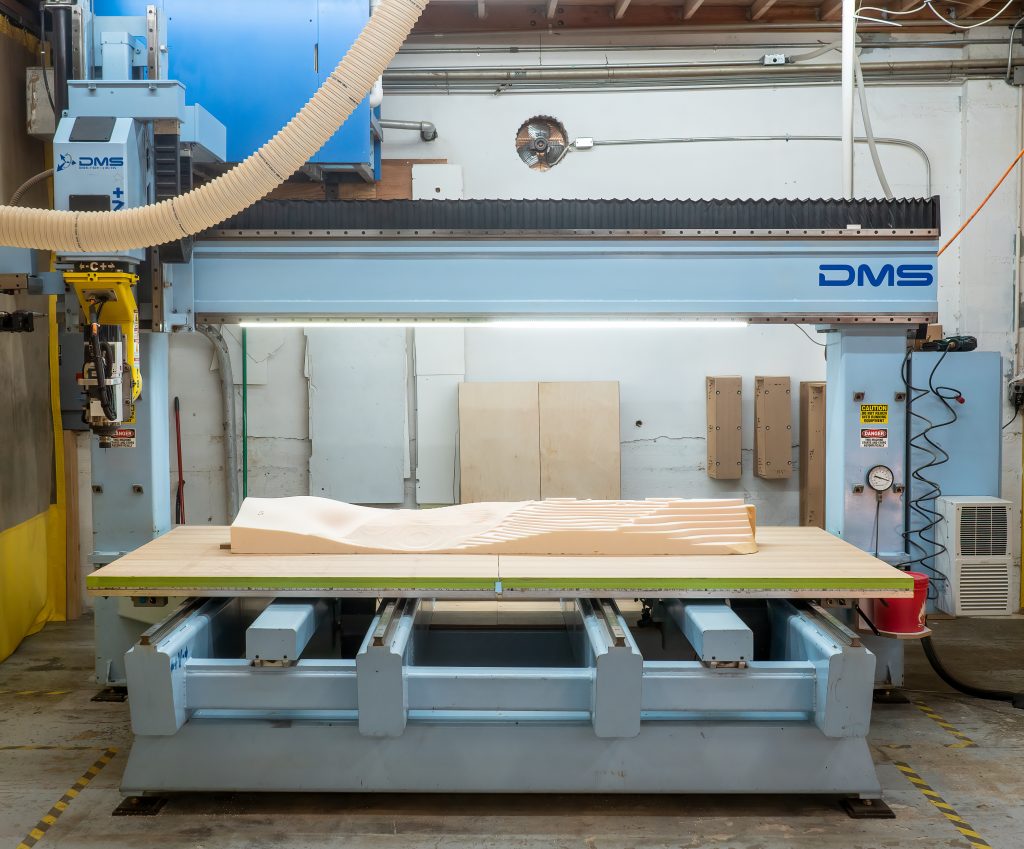Are you wondering if you can cut threads on a 4 axis CNC router? This is a common question among those who are considering investing in this machinery. The good news is that yes, it is possible to cut threads on a 4 axis CNC router, and it can be an efficient and precise way to produce threaded parts.
In this article, we will explore the process of cutting threads on a 4 axis CNC router, the benefits of using this method, and the potential limitations. Whether you are a seasoned machinist or a beginner, this information will help you determine if a 4 axis CNC router is the right choice for your threading needs. So, let’s dive in!
Can You Cut Threads on a 4 Axis CNC Router?
If you have a 4 axis CNC router, you may be wondering if it’s possible to cut threads with it. The short answer is yes, you can cut threads on a 4 axis CNC router. However, there are a few things to keep in mind before you start.
What is a 4 Axis CNC Router?
A 4 axis CNC router is a machine that can move in four different directions: up and down, side to side, forwards and backwards, and rotationally. This makes it ideal for cutting complex shapes and designs out of a variety of materials, including wood, plastic, and metal.
How to Cut Threads on a 4 Axis CNC Router
To cut threads on a 4 axis CNC router, you will need to use a special tool called a thread mill. This tool is similar to an end mill, but it has multiple cutting edges that allow it to create threads in a single pass.
Once you have your thread mill, you will need to program your CNC router to cut the threads to the correct specifications. This will involve setting the depth, pitch, and diameter of the threads, as well as the speed and feed rate of the machine.
Benefits of Cutting Threads on a 4 Axis CNC Router
Cutting threads on a 4 axis CNC router offers a number of benefits. First, it allows you to create complex and intricate designs that would be difficult or impossible to achieve using traditional cutting methods.
Second, it can save you time and money by eliminating the need for manual labor and reducing the amount of material waste. Finally, it can improve the accuracy and precision of your cuts, resulting in a higher quality finished product.
Thread Cutting vs. Thread Rolling
There are two main methods for creating threads: thread cutting and thread rolling. While both methods can be used on a 4 axis CNC router, they have some key differences.
Thread cutting involves removing material to create the threads, while thread rolling involves compressing the material to form the threads. Thread rolling is generally faster and more efficient than thread cutting, but it requires specialized equipment and is not always suitable for all materials.
Common Applications for Thread Cutting on a 4 Axis CNC Router
Thread cutting on a 4 axis CNC router is commonly used in a variety of applications, including:
– Aerospace and aviation industries for creating parts with threaded holes and fasteners
– Automotive industries for creating threaded components such as engine blocks and cylinder heads
– Medical industries for creating custom screws and implants
– General manufacturing for creating custom threaded parts and components
Choosing the Right Thread Mill for Your Application
When choosing a thread mill for your 4 axis CNC router, there are a few things to consider. First, you will need to ensure that the thread mill is compatible with your machine and can cut the threads to the correct specifications.
Second, you will need to consider the material you will be cutting and choose a thread mill that is suitable for that material. Finally, you will need to consider the thread type and size you need and choose a thread mill that can create those threads.
Conclusion
Cutting threads on a 4 axis CNC router is not only possible, but it offers a number of benefits over traditional cutting methods. By using a thread mill and programming your machine to cut the threads to the correct specifications, you can create complex designs and save time and money in the process. Whether you are in the aerospace, automotive, medical, or general manufacturing industry, cutting threads on a 4 axis CNC router can help you achieve your goals faster and more efficiently.
Frequently Asked Questions
Below are 5 commonly asked questions and their answers about cutting threads on a 4 axis CNC router.
Can a 4 axis CNC router cut threads?
Yes, a 4 axis CNC router can cut threads by using a threading attachment. The threading attachment is a tool that is mounted onto the CNC router and used to cut threads with precision. The attachment is used to create threads of various sizes and pitches by guiding the cutting tool along the workpiece.
There are many factors that need to be considered when cutting threads on a 4 axis CNC router, such as the type of material being used, the size and pitch of the thread, and the speed and feed rates of the machine. It is important to have a good understanding of these factors in order to achieve accurate and consistent results.
What are the benefits of cutting threads on a 4 axis CNC router?
Cutting threads on a 4 axis CNC router offers several benefits over traditional methods. One of the biggest advantages is the precision and accuracy that can be achieved. CNC routers are capable of cutting threads to extremely tight tolerances, which ensures that the threads are consistent and fit perfectly.
Another benefit of using a 4 axis CNC router for cutting threads is speed. CNC routers are much faster than traditional methods, which means that more threads can be cut in a shorter amount of time. This is especially beneficial for large-scale production runs.
What types of threads can be cut on a 4 axis CNC router?
A 4 axis CNC router can be used to cut a wide variety of threads, including metric, UN, NPT, and BSP threads. The type of thread that can be cut depends on the threading attachment being used, as well as the capabilities of the machine itself.
It is important to ensure that the threading attachment is compatible with the machine and is capable of cutting the desired type of thread. In addition, it is important to have a good understanding of the thread specifications, such as thread pitch, major diameter, and minor diameter, in order to achieve accurate results.
What materials can be used for cutting threads on a 4 axis CNC router?
A 4 axis CNC router can be used to cut threads on a wide range of materials, including metals, plastics, and composites. The type of material that can be used depends on the capabilities of the machine and the threading attachment being used.
It is important to select the appropriate cutting tool and cutting parameters for the material being used in order to achieve accurate and consistent results. It may also be necessary to use coolant or lubricant to reduce heat and prevent damage to the cutting tool and workpiece.
What are some tips for cutting threads on a 4 axis CNC router?
There are several tips that can help to ensure successful thread cutting on a 4 axis CNC router. One important tip is to carefully select the appropriate threading attachment and cutting tool for the job. It is also important to set the correct cutting parameters, such as speed and feed rates, to ensure that the threads are cut accurately and consistently.
In addition, it is important to properly prepare the workpiece before cutting threads. This may involve cleaning and deburring the material, as well as securing it firmly to the machine bed. It is also important to use coolant or lubricant to reduce heat and prevent damage to the cutting tool and workpiece.
In conclusion, cutting threads on a 4 axis CNC router is possible, but it requires the right tools and techniques. With the use of a specialized thread mill and proper programming, you can create accurate and precise threads on a variety of materials. However, it is important to note that the process may be time-consuming and may require some trial and error to achieve the desired results.
Overall, the ability to cut threads on a 4 axis CNC router can be a valuable asset for those in the manufacturing industry. It allows for increased efficiency and precision in the production process, ultimately leading to higher quality products. By understanding the necessary tools and techniques, you can take advantage of this capability and enhance your manufacturing capabilities.
So, if you’re looking to expand your CNC capabilities, consider investing in a specialized thread mill and learning the proper programming techniques. With some patience and practice, you can take advantage of this powerful capability and take your manufacturing to the next level.
Request a quote today!
[contact-form-7 id="1578" title="Contact form"]
Please compress the file into a ZIP or RAR file before uploading. Alternatively, send through your RFQ by email.
enquires@unitymanufacture.com





